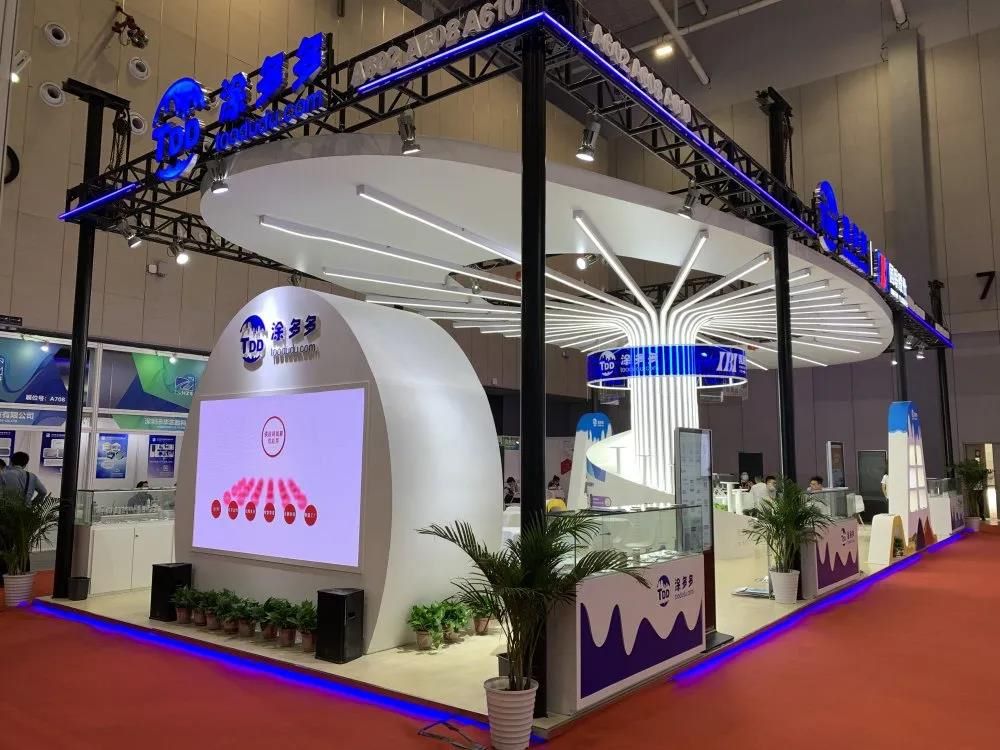Directional Tires: Extreme Safety Focus
In the century-long evolution of the automobile industry, tires have always been the "silent guardian" connecting machinery and the ground.
As a technically specialized category, directional tires, which appear to have a simple groove array on the surface, are actually a sophisticated system that integrates fluid mechanics, material science and safety engineering.
When we squat down and observe the V-shaped grooves extending at a 45-degree acute angle, we see not only the geometric shape of the rubber, but also the key line of defense against the risk of hydroplaning in the modern transportation system.
1. The "gene map" of directional tires: a leap from bionics to engineering
The core design inspiration of directional tires comes from the drainage wisdom of nature - the vein direction of leaves in tropical rainforests and the diversion structure of river clam shells are inspiring engineers on how to make tires "dynamically drain" on flooded roads.
Its iconic V-groove matrix is essentially an integration of a micro-hydraulic system: the opening angle of each groove is strictly controlled at 52±3 degrees, which is the optimal drainage angle verified by wind tunnel testing, which can increase the water flow efficiency by 37% (Michelin 2023 fluid mechanics report data).
The continuous rib design running through the center of the tread draws on the drag reduction principle of high-speed rail tracks, reducing the energy loss of tread deformation and reducing rolling resistance by 11-15%, which means that a car with an average annual mileage of 20,000 kilometers can save about 180 liters of fuel by using directional tires.
Directional tires differ significantly from symmetrical and asymmetrical pattern tires in design and performance, as shown in the following:
Symmetrical pattern tires use left and right mirror grooves, which do not need to distinguish directions for installation, focus on balanced wear resistance and quietness, and are suitable for urban commuting, but drainage and handling performance are relatively conservative.
Asymmetric pattern tires have differentiated designs for inner and outer grooves, and need to distinguish between "Outside/Inside" installation.
The outer side enhances cornering support, while the inner side focuses on drainage. They have strong dry grip and are suitable for sports scenes, but the drainage efficiency on wet roads is lower than that of directional tires, and the rolling resistance is higher.
Directional tires use a single-sided V-groove + directional arrow design, and the pattern blocks are arranged in one direction. The drainage efficiency is 30% higher than that of ordinary tires, and the rolling resistance is low.
They need to be installed strictly in the direction of the arrow. They are suitable for rainy, waterlogged or slippery environments in winter. The lateral grip is weak and the installation requirements are high.
The differences between the three are due to targeted optimization for different scenarios: symmetrical patterns pursue all-round balance, asymmetric patterns strengthen control, and directional tires focus on safety protection in extreme environments.
2. The "three-dimensional law" of installation and maintenance: precise control of angles, directions and cycles
The performance release of directional tires is highly dependent on installation accuracy. Tests by German TÜV SÜD show that when the tire installation direction deviates from the driving direction by more than 5 degrees, the critical speed of hydroplaning will drop sharply from the standard value of 85km/h to 62km/h, which is equivalent to a nearly 40% increase in the risk of loss of control when driving at a normal speed in heavy rain. This requires technicians to follow "triple verification" during installation:
Visual anchoring: Align the "ROTATION" arrow on the sidewall with the wheel hub mark, with an error of no more than 1mm;
Tactile calibration: Use fingertips to slide along the groove to sense the unidirectional inclination of the tire block (normally it should be a gradient of 3-5 degrees);
Instrument detection: Use a laser locator to scan the tread to ensure that the angle between the groove axis and the vehicle's travel direction is within ±2 degrees.
The maintenance link is also full of technical details: Due to the unilateral wear characteristics of directional tires, their rotation cycle needs to be shortened to 8,000-10,000 kilometers, and only "same-side front and rear wheel rotation" can be used, and cross rotation is strictly prohibited.
According to after-sales data from a certain tire brand, vehicles that do not follow this rule have a tread wear rate 2.3 times higher than vehicles with standard maintenance, which directly shortens the average life by 12,000 kilometers.
3. Scenario-based performance: "Safety barrier" in heavy rain and "friction revolution" at low temperatures
In actual tests during the rainy season in the south of the Yangtze River, vehicles equipped with directional tires showed amazing drainage capabilities: when the road surface water depth reaches 3mm, the effective contact area of ordinary symmetrical pattern tires will drop to 58% of the normal state, while directional tires can maintain this value above 79% by virtue of the "pumping effect" of the V-groove.
This difference is particularly critical during emergency braking - at the same speed (80km/h), the braking distance of directional tires on slippery roads is 12.7 meters shorter than that of ordinary tires, which is equivalent to avoiding a rear-end collision that may occur at an intersection.
In winter scenarios, the "variant" of directional tires - studded directional tires show another dimension of performance. The serrated design of the inner wall of the groove (patent number: US20210379821A1) can cut into the ice and snow layer to a depth of 2.1mm at -15℃, which improves the grip by 35% compared with traditional snow tires.
Data from Nordic testing institutions show that vehicles equipped with such tires can reach a maximum cornering speed of 58km/h on a snow-covered circular track, which is 11km/h higher than non-directional snow tires, which means that the risk of vehicle loss of control on Scandinavian winter roads is reduced by 27%.
4. Technological evolution and future prospects: from passive defense to active adaptation
The technological iteration of directional tires has never stopped. The Michelin Pilot Sport 5 Directional, released in 2023, applied 4D printing groove technology to mass-produced tires for the first time.
Through the gradient curing of the photosensitive resin layer, the inner wall of the groove forms a micron-level convex dot array, which can increase the water film cutting efficiency by 22%.
Goodyear is developing an "intelligent deformation tread" that uses shape memory alloy wire embedded in the tire body to dynamically adjust the groove opening and closing angle according to the road humidity data fed back by the sensor, thus achieving a leap from "directional drainage" to "adaptive diversion".
Behind these technological breakthroughs is a redefinition of tire safety - no longer limited to extending the service life, but building a full-cycle safety system from installation, use to maintenance.
As Dr. Anna Schwarz, director of Continental's tire division, said: Every directional tire is a precise fluid control unit. When it touches the ground at the right angle, those seemingly static grooves are performing hundreds of hydrodynamic calculations per second.
6. User Action Guide: Breaking Five Cognitive Misconceptions
Misconception 1: "Asymmetric patterns can be used as directional tires"
Truth: Asymmetric patterns focus on dry ground control, and their grooves have no unidirectional diversion design. The drainage efficiency in heavy rain is 34% lower than that of directional tires.
Myth 2: "Winter tires can be installed in reverse"
Truth: Some high-end winter tires use a unidirectional groove design (such as the Continental ContiWinterContact TS 860 S). Reverse installation will increase the probability of snow and mud retention by 51%.
Myth 3: "Second-hand directional tires can be used directly"
Truth: An analysis of 200 second-hand directional tires by a testing agency showed that 19% had wear on the installation direction mark, and 43% had excessive wear due to the previous owner's incorrect replacement.
Myth 4: "It is normal for directional tires to be noisy"
Truth: Obvious resonance will only occur when the groove angle exceeds 60 degrees. High-quality directional tires can control the noise within 68 decibels through variable pitch groove design (such as Pirelli P Zero Wet), which is no different from ordinary tires.
Myth 5: "Four-wheel drive vehicles do not need to consider the direction of the pattern"
Truth: Audi quattro department's test shows that when four-wheel drive vehicles are mixed with tires with different directional patterns, the central differential load increases by 27%, which may cause early failure of the transmission system.
The next time we lean over to check the tires, we might as well touch the direction of those V-shaped grooves with our fingertips to feel the warmth of industrial design.
These angles accurate to 0.1 degrees and groove depths of millimeters are the crystallization of wisdom between humans and nature.
Respecting the "life direction" of tires is not only a reverence for mechanical principles, but also a solemn commitment to every trip - on the highway in heavy rain, on the mountain road covered with ice and snow, those directional grooves that work silently are guarding our safety boundaries with invisible power.











